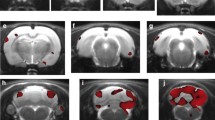Abstract
The influence of five doses of the D-2 receptor agonist quinpirole (0.025, 0.05, 0.075, 0.10, and 0.20 mg/kg IP) on the odor detection performance of 21 adult male Long Evans rats was assessed using high precision olfactometry and a go/no-go operant task. Additionally, ten rats were pre-treated with the D-2 receptor antagonist spiperone (0.62 mg/kg IP) and their performance monitored following quinpirole administration. Treatments were administered every third day in a counterbalanced order, with the quinpirole injections occurring 15 min before, and the spiperone injections 35 min before, the 260-trial test sessions. Quinpirole injection resulted in a dose-dependent decrease in odor detection performance, as measured by the percentage of correct trials and by the non-parametric signal detection sensitivity index SI. Prior treatment with spiperone eliminated these effects. Dose-related influences of quinpirole on (a) the average latency to initiate a detection response (i.e., the S+ response latency), (b) the total session duration, and (c) the number of aborted trials were also eliminated or greatly attenuated by prior spiperone injection. These results suggest that D-2 receptors may be involved in the modulation of odor detection performance and related behaviors.
Similar content being viewed by others
References
Arnt J (1985) Behavioural stimulation is induced by separate dopamine D-1 and D-2 receptor sites in reserpine-pretreated but not in normal rats. Eur J Pharmacol 113:79–88
Bradley PB, Key BJ (1958) The effect of drugs on the arousal responses produced by electrical stimulation of the reticular formation of the brain. Electroencephalogr Clin Neurophysiol 10:97–110
Braun AL, Barone P, Chase TN (1986) Interaction of D1 and D2 dopamine receptors in the expression of dopamine agonist induced behaviors. In: Breese GR, Creese I (eds) Neurobiology of central D1-dopamine receptors. Plenum Press, New York, pp 151–166
Bujas Z (1980) Reaction time as a tentative measure of taste intensity. In: van der Starre H (ed) Olfaction and taste VII. IRL Press, London, pp 363–366
Doty RL, Ferguson-Segall M,(1987) Odor detection performance of rats following d-amphetamine treatment: a signal detection analysis. Psychopharmacology 93:87–93
Doty RL, Ferguson-Segall M, Lucki, I, Kreider M (1988) Effects of intrabulbar injections of 6-hydroxydopamine on ethyl acetate odor detection in castrate and non-castrate male rats. Brain Res 444:95–103
Dravnieks A (1979) Instrumental aspects of olfactometry. In: Moulton DG, Turk A, Johnston JW Jr (eds) Methods in olfactory research. Academic Press, New York, pp 1–61
Frey PW, Colliver JA (1973) Sensitivity and responsivity measures for discrimination learning. Learn Motiv 4:327–342
Hjorth S, Carlsson A (1988) In vivo receptor binding, neurochemical and functional studies with the dopamine D-1 receptor antagonist SCH23390. J Neural Transm 72:83–97
Horn AS, Cuello AC, Miller RJ (1974) Dopamine in the mesolimbic system of the rat brain: endogenous levels and the effects of drugs on the uptake mechanisms and stimulation of adenylate cyclase activity. J Neurochem 22:265–270
Louilot A, Gonon F, Buda M, Simon H, LeMoal M, Pujol JF (1985) Effects of d- and l-amphetamine on dopamine metabolism and ascorbic acid levels in nucleus accumbens and olfactory turbercle as studied by in vivo differential pulse voltametry. Brain Res 336:253–265
Marshall DA, Doty RL, Lucero DP, Slotnick BM (1981) Odor detection thresholds in the rat for the vapors of three related perfluorocarbons and ethylene glycol dinitrate. Chem Senses 6:445–453
Siegel S (1956) Nonparametric statistics for the behavioral sciences. McGraw-Hill, NY
Tsuruta K, Frey EA, Grewe CW, Cote TE, Eskay RL, Kebabian JW (1981) Evidence that LY-141865 specifically stimulates the D-2 dopamine receptor. Nature 292:463–465
Walters JR, Bergstrom DA, Carlson JH, Chase TN, Braun AR (1987) D1 dopamine receptor activation required for postsynaptic expression of D2 agonist effects. Science 236:719–722
Yamamoto T, Kato T, Matsuo R, Kawamura Y, Yoshida M (1985) Gustatory reaction time to various sweetners in human adults. Physiol Behav 35:411–415
Zimney GH (1961) Methods in experimental psychology. Ronald Press, New York
Author information
Authors and Affiliations
Rights and permissions
About this article
Cite this article
Doty, R.L., Risser, J.M. Influence of the D-2 dopamine receptor agonist quinpirole on the odor detection performance of rats before and after spiperone administration. Psychopharmacology 98, 310–315 (1989). https://doi.org/10.1007/BF00451680
Received:
Accepted:
Issue Date:
DOI: https://doi.org/10.1007/BF00451680




